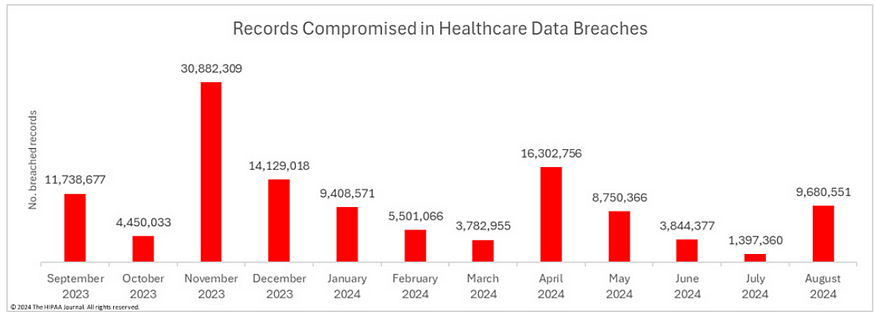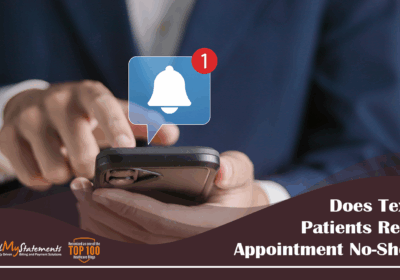7 Major Challenges Facing the Healthcare Industry in 2025

The healthcare industry is poised to enter a new era in 2025, marked by both unprecedented opportunities and significant challenges. As technology continues to advance, patient expectations evolve, and regulatory landscapes shift, healthcare providers must adapt, or risk falling behind.
This article will explore seven key areas of concern and offer insights into how healthcare providers can proactively address these challenges and position themselves for success.
Rising Costs and Inflation
Escalating costs and inflationary pressures are creating significant financial strain on the healthcare industry. The healthcare inflation rate outpaces the inflation rate of the economy as a whole — while consumer goods and services have an 85% inflation rate since 2000, healthcare expenses have increased a staggering 119% during the same period. Various factors are making it difficult for both providers and patients to manage expenses. Some key cost drivers include:
- Pharmaceutical Costs: The prices of prescription drugs have been steadily rising, often outpacing inflation. This increase is driven by factors such as the development of new and expensive treatments, patent protections, and limited price regulation.
- Medical Supplies: The cost of medical supplies, including devices, equipment, and disposables, has also been on the rise. This is due to factors such as technological advancements, increased demand, and supply chain disruptions.
- Labor Costs: The cost of labor, particularly for healthcare professionals, has been increasing due to factors such as shortages, wage inflation, and the rising cost of benefits.
To address the rising costs of healthcare, policymakers and industry stakeholders are exploring various strategies. For example, recent technology advancements like AI and Machine Learning are helping to automate repetitive healthcare tasks, reducing staffing needs and streamlining processes. Increasing transparency in healthcare pricing can help patients make informed decisions and reduce the cost of care. Finally, implementing value-based payment models can incentivize providers to deliver high-quality care at lower costs.
Cybersecurity
The growing reliance of healthcare organizations on digital infrastructure has elevated the risk of cyberattacks. Sensitive patient data, including medical records and financial information, represents a prime target for malicious actors. Successful breaches can result in data compromises, operational disruptions, and substantial financial losses.
As more healthcare functions move online over the next year – like an increase in digital patient statements adoption – it’s extremely important to ensure these processes are protected from outside threats.

The prevalence of cyberattacks within healthcare will persist due to the industry’s slow response to emerging threats and the inherent vulnerabilities of decentralized systems. A data breach not only compromises sensitive patient information but also incurs significant financial penalties for non-compliance with industry regulations.
To mitigate these risks, healthcare providers are increasingly investing in robust cyber-resilience measures. Implementing multi-factor authentication and strong firewalls are essential steps in reducing the vulnerability to cyberattacks. Additionally, requiring third-party vendors to hold a HITRUST certification, which encompasses a comprehensive set of security standards, can significantly lower the risk of ransomware attacks and data breaches.
Invoicing and Payment Processing
As patients increasingly bear the financial burden of healthcare costs, patient collections have emerged as a top challenge for medical practices. To encourage timely payments and enhance the patient experience, providers must prioritize patient preferences and offer flexible payment options.
Adopting digital communications — such as patient estatements — and a variety of payment methods, including chat2pay, mobile payments, and payment plan options, can significantly improve patient satisfaction and streamline the payment process. Utilizing text message alerts and reminders further enhances communication and reinforces financial obligations.

Implementing a robust patient billing system in-house can be both costly and time-consuming. By partnering with a provider specializing in cloud-based billing solutions, healthcare practices can access cutting-edge technology without the need for significant investments or administrative overhead. This approach ensures compliance with data privacy regulations while delivering a seamless and efficient payment experience for patients.
Healthcare Workforce Shortages
The healthcare industry is facing a growing labor crisis of workforce shortages, particularly for nurses and physicians. This shortage is leading to longer wait times, reduced access to care, and potential impacts on the quality of care. Several factors contribute to this shortage, including:
- Aging Population: The increasing number of older adults requires more healthcare services, further straining the existing workforce.
- Burnout and Turnover: High rates of burnout and turnover among healthcare professionals are exacerbating the shortage. Factors such as heavy workloads, long hours, and emotional stress contribute to burnout, leading many to leave the profession.
- Retirement: As the baby boomer generation ages and retires, there is a wave of experienced healthcare professionals leaving the workforce. This creates a gap in the supply of skilled workers.
- Inadequate Supply of Graduates: The number of graduates from healthcare programs, such as nursing and medical schools, is not keeping pace with the growing demand for healthcare services. This shortage is particularly acute in certain specialties and geographic regions.
To attract and retain healthcare professionals, substantial improvements in working conditions, training, and resources are crucial. Leveraging telehealth and remote care can also help alleviate workload pressures and enhance job satisfaction.
Aging Population
The global population is aging rapidly, with a significant increase in the number of older adults. This demographic shift has profound implications for healthcare systems, which must adapt to meet the unique needs of an aging population. Some key trends to consider:
- Increasing Lifespan: People are living longer, with life expectancy increasing in many countries. This is due to factors such as improved healthcare, better living conditions, and advancements in medical technology.
- Growing Proportion of Older Adults: The proportion of the population aged 65 and older is steadily increasing. This trend is particularly pronounced in developed countries.
- Chronic Disease Burden: Older adults are more likely to suffer from chronic diseases such as heart disease, stroke, diabetes, and dementia. These conditions require ongoing care and management.
To address the challenges posed by an aging population, healthcare systems must adopt a proactive and comprehensive approach, including leveraging technology — such as telehealth and remote monitoring, and improving preventative care.
Regulatory Changes
Healthcare is subject to a complex and ever-evolving regulatory environment. Adapting to these changes is crucial for providers to maintain compliance, avoid penalties, and ensure the quality of care.
The following are current regulatory challenges to focus on over the next year:
- Antitrust Laws: Healthcare providers must also be aware of antitrust laws that prohibit anticompetitive practices, such as mergers and acquisitions that reduce competition.
- Data Privacy Laws: The protection of patient data is a top priority, and healthcare providers must comply with various data privacy laws, such as the Health Insurance Portability and Accountability Act (HIPAA) in the United States and the General Data Protection Regulation (GDPR) in the European Union. These laws impose strict requirements for safeguarding patient information and preventing data breaches.
- Interoperability Standards: Ensuring interoperability between healthcare systems is essential for seamless data exchange and patient care coordination. Adhering to interoperability standards, such as the ONC Health IT Certification Criteria, is crucial for providers to connect with other healthcare organizations and exchange patient information electronically.
- Value-Based Payment Models: The shift towards value-based payment models is transforming the way healthcare providers are reimbursed. These models emphasize quality of care over quantity of services, requiring providers to demonstrate positive patient outcomes and efficient use of resources.
- Telehealth Regulations: The growing use of telehealth has led to new regulatory considerations. Ensuring compliance with telehealth regulations, including licensing requirements and patient privacy standards, is essential for providers offering virtual care services.
- Drug Pricing and Reimbursement: The pricing and reimbursement of pharmaceuticals continue to be a major regulatory issue. Governments and payers are seeking to control drug costs and promote affordable access to medications.
By proactively addressing regulatory challenges, healthcare providers can mitigate risks, maintain compliance, and deliver high-quality care.
Technological Advancements and Integration
Innovations such as artificial intelligence (AI), machine learning, and telehealth are presenting new opportunities to improve patient care, enhance efficiency, and reduce costs. However, the adoption and integration of these technologies also pose significant challenges.

Some key technological trends include:
- Artificial Intelligence (AI): AI is being used in various areas of healthcare, including medical imaging, drug discovery, and patient diagnosis. AI algorithms can analyze vast amounts of data to identify patterns and make predictions, leading to more accurate diagnoses and personalized treatment plans.
- Machine Learning: Machine learning is a subset of AI that involves training algorithms on large datasets to recognize patterns and make predictions without being explicitly programmed. Machine learning is being used in areas such as medical image analysis, drug development, and predictive modeling.
- Telehealth: Telehealth, which enables healthcare providers to deliver care remotely using technology, has become increasingly popular. It offers convenience for patients and can improve access to care, especially in rural or underserved areas.
- Electronic Health Records (EHRs): EHRs have become a standard tool in healthcare, allowing for the electronic capture, storage, and retrieval of patient medical information. EHRs can improve patient care coordination, reduce medical errors, and support population health management.
The adoption and integration of new technologies can be challenging for healthcare organizations due to factors such as cost, infrastructure requirements, and staff training. Increasing technology usage also raises concerns about data privacy and security, requiring organizations to implement robust measures to protect patient data from unauthorized access and breaches.
Final Thoughts
The healthcare industry is bracing for a turbulent year in 2025, characterized by rising costs, workforce shortages, technological advancements, and regulatory changes. Addressing these challenges will require innovative solutions, collaboration among stakeholders, and a focus on improving patient outcomes while ensuring sustainability and affordability. By proactively addressing these issues, the healthcare industry can navigate the complexities of the future and continue to provide high-quality care for all.
Partner with MailMyStatements to transition your practice’s billing operations to a personalized cloud platform. Our comprehensive solutions enable your team to focus on delivering exceptional patient care while we handle the complexities of revenue cycle management. Get in touch with us today.
LEARN MORE ABOUT HOW OUR SOLUTIONS CAN SAVE YOU TIME AND MONEY!
![]()



